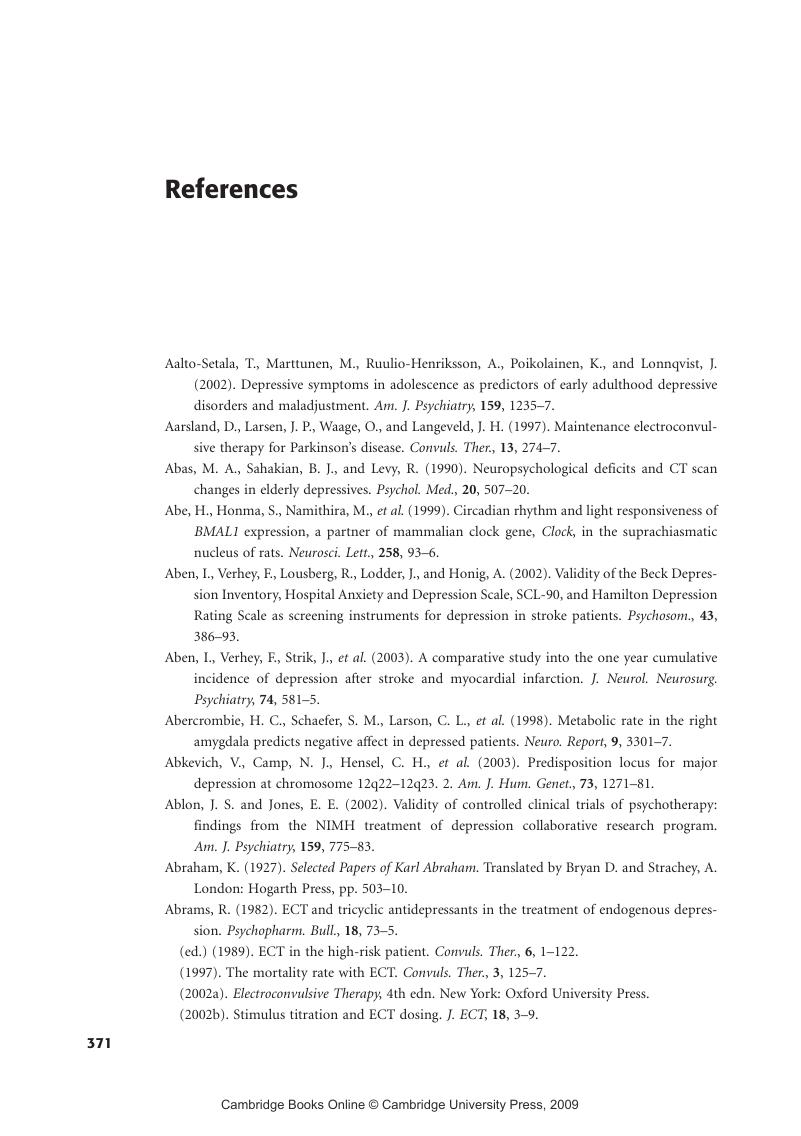Book contents
- Frontmatter
- Contents
- List of patient vignettes
- Preface
- Acknowledgments
- 1 Melancholia: a conceptual history
- 2 Melancholia defined
- 3 Defining melancholia by psychopathology
- 4 Defining melancholia: laboratory tests
- 5 Examination for melancholia
- 6 The differential diagnosis of melancholia
- 7 Suicide in melancholia
- 8 Electroconvulsive therapy for melancholia
- 9 Achieving effective ECT
- 10 The validity of the pharmacotherapy literature in melancholia
- 11 Basic pharmacotherapy for melancholic patients
- 12 Pharmacotherapy for melancholic patients in complicating circumstances
- 13 Proposed treatments for melancholia
- 14 The pathophysiology of melancholia
- 15 Future directions
- References
- Index
- References
References
Published online by Cambridge University Press: 14 August 2009
- Frontmatter
- Contents
- List of patient vignettes
- Preface
- Acknowledgments
- 1 Melancholia: a conceptual history
- 2 Melancholia defined
- 3 Defining melancholia by psychopathology
- 4 Defining melancholia: laboratory tests
- 5 Examination for melancholia
- 6 The differential diagnosis of melancholia
- 7 Suicide in melancholia
- 8 Electroconvulsive therapy for melancholia
- 9 Achieving effective ECT
- 10 The validity of the pharmacotherapy literature in melancholia
- 11 Basic pharmacotherapy for melancholic patients
- 12 Pharmacotherapy for melancholic patients in complicating circumstances
- 13 Proposed treatments for melancholia
- 14 The pathophysiology of melancholia
- 15 Future directions
- References
- Index
- References
Summary

- Type
- Chapter
- Information
- MelancholiaThe Diagnosis, Pathophysiology and Treatment of Depressive Illness, pp. 371 - 521Publisher: Cambridge University PressPrint publication year: 2006



